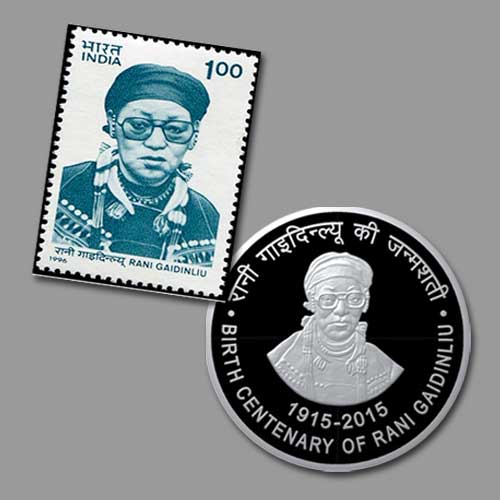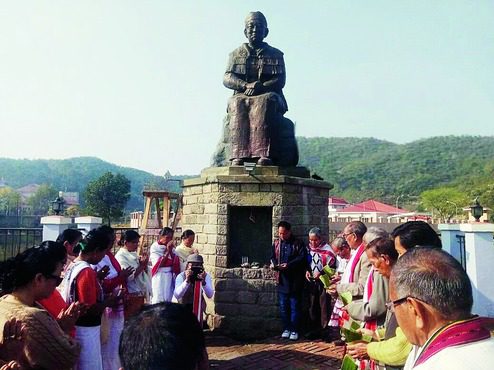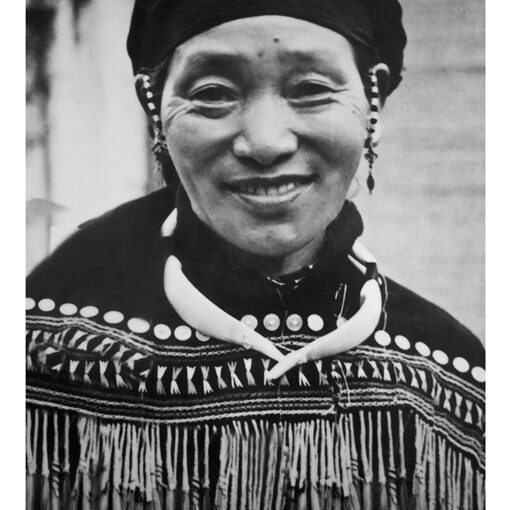Rani Gaidinliu, also known as Rani Maa, Daughter of Hills ,was born on 26 January 1915 in Nungkao village in the Tamenlong district of Manipur. She belonged to the Rongmei tribe of Nagas of Manipur.
At the age of 13 , she joined freedom movement to end the British rule and to protect the Naga culture from the Christian missionaries. Due to this she was arrested and sentenced to life imprisonment by the British officials.
After spending 14 years in prison she again revolted against the NNC( Naga National Council ) who wanted a separate nation for the Nagas. Rani Gaidinliu demanded for a separate Zeliangrong territory within the union of India and started guerrilla warfare against NNC.
To honour the Daughter of Hills the Indian government awarded her a Tamrapatra(given to individuals for their participation in the Indian freedom struggle) in 1972, Padma Bhushan in 1981, Vivekanand Seva award in 1982 and a postal stamp in 1996.

Content
Rani Gaidinliu & the Heraka Movement
Haipou Jadonang, who trained Rani Gaidinliu as a warrior, socio-political leader and as a spiritual reformer started the Heraka Movement. Heraka which means Pure was aimed at re-uniting the Naga tibes( Zeliangrong people) to establish self-rule.
Moreover it also focused on reformation of Naga tribal religion. They believed that ritual sacrifices should be avoided or should be completely banned. The principle belief in the Heraka form is the ban on sacrifices and adoption of one god.
Jadonang established a cave temple at Bhuban cave near Bhuban hill. Bhuban cave is important for the Heraka as it is the point from where the reform began during the 1920’s.
Following the Rongmei tradition ,Jadonang established the cave temple in the same belief as the Rogmei tradition suggested that the humans first emerged from a primeval cave.
Jadonang was a visionary man. He was able to unite the Zeliangrong(refers to Zeme, Liangmai, Rongmei Naga tribes which lives in Assam, Nagaland, Manipur) people.
He observed that the introduction of mass religious conversion by the British posed a serious threat to indigenous Nagas, and for this reason he was executed by the British in 1931.
After the death of Haipou Jadonang 16 year old Rani Gaidinliu became the leader of Heraka movement.
The colonial administrators used the white power status and privilege to continuously exploit and suppress the marginalized Nagas. They brought many changes in Zeliangrong religion.
British officials started imposing tax which Manipur people had never paid before. New economic system introduced by the British deeply affected the people. Forest laws were also introduced by declaring restricted forest which prevented the local people to use and consume forest product such as bamboo etc.
People were forced to render free services for repairing and maintenance of government roads, bridges, dams etc. When the Christian missionaries gained significant control on the hills, Rani Gaidinliu turned the religious movement into a struggle for freedom.
One misconception about Rani Gaidinliu’s struggle against the missionaries is that she was against Christianity, however she never opposed Christianity but she was against those who are forcefully converting the Nagas and exploiting their lives.
Gadinliu once said “Loss of religion is the loss of culture , and loss of culture is the loss of identity”
Inspired by Gandhiji and other freedom fighters like Pt. Nehru she started her own Non Cooperation Movement- the no tax campaign.
At the age of only 16, she organized Zeliangrong army to throw British out from their home land. On February 16 1932 ,they attacked Assam Rifles patrol party in North Cachar hills. The Bristish in retaliation burned down several villages in the Naga hills .
Rani Gaidinliu’s arrest and later years:
Manipur government announced a reward of rupees 200 later increased to 500 and exemption from house tax for anybody who would give information leading to her arrest.
She was arrested( at the age of 16) on 17 October 1932 under the leadership of Captian McDonald of Assam Rifels. She spent 14 years in prison.
P.T.Nehru met her in shillong jail in 1937 and gave her the title Rani Gaidinliu. When India got independence P.T.Nehru wrote to the authorities in Assam to release the freedom fighter and ultimately after continuous intervention of the them prime minister the authorities official agreed to release her but on one condition that she will live outside the Manipur state.
After her release he again started a revolt against NNC(Naga National Council) who were demanding separate nation for the Nagas.

Donate to our Cause
If you Support what we are doing and would like to contribute to help us grow and reach more Indians to teach them more about such forgotten historic Indian Heroes and stories, please consider donating any amount. It will help us grow

